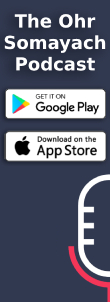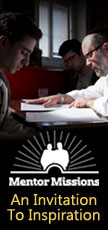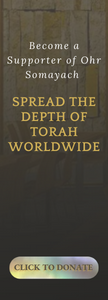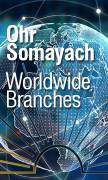Parsha Q&A - Parshat Tetzaveh
Parshat Tetzaveh - Shushan Purim
This publication is also available in the following formats:
Parsha Questions
- What two precautions were taken to assure the purity of oil for the menorah?
- How was Aharon commanded to kindle the menorah?
- What does tamid mean in reference to the menorah?
- What does kehuna mean?
- Name the eight garments worn by the kohen gadol.
- To what does Rashi compare the ephod?
- In which order were the names of the Tribes inscribed on the ephod?
- The stones of the ephod bore the inscription of the names of the sons of Yaakov. Why?
- For what sins did the choshen mishpat atone?
- What are three meanings of the word mishpat?
- What was lacking in the bigdei kehuna in the second Beit Hamikdash?
- Which garment's fabric was woven of only one material?
- When the kohen gadol wore all his priestly garments, where on his head was the tefillin situated?
- What does the word tamid mean in reference to the tzitz? (two answers)
- Which garments were worn by a kohen hediot?
- During the inauguration of the kohanim, a bullock was brought as a sin offering. For what sin did this offering atone?
- Moshe was commanded to wash Aharon and his sons to prepare them to serve as kohanim (29:4). How were they washed?
- What was unique about the bull sin-offering brought during the inauguration of the kohanim?
- How did the oil used for the meal-offering differ from the oil used for the menorah?
- What does the crown on the mizbeach haketoret symbolize?
I Did Not Know That!
FASTERS OF ESTHER UNITE!!
Most years in most places, Jews wait until after the Megillah reading to break the Fast of Esther. However, this year all Jews will wait until after the Megillah reading.
When Shushan Purim -- Purim celebrated in Jerusalem and other walled cites -- is not on Shabbat, the Megillah is not read there on the night after the fast, and therefore there is no reason to wait to break the fast. However, this year, because Shushan Purim is on Shabbat, everybody everywhere will read the Megillah on Thursday night and break their fast only afterwards!
Sumbitted by an Ohrnet employee
Recommended Reading List
|
|
Answers to this Week's Questions
Questions | Contents
All references are to the verses and Rashi's commentary, unless otherwise stated
27:20 - The olives were pressed and not ground; and only the first drop was used.
27:20 - He was commanded to kindle it until the flame ascended by itself.
27:20 - It means that it should be kindled every night.
28:3 - Service.
28:4,36,42 - Choshen, ephod, me'il, ketonet, mitznefet, avnet, tzitz, and michnasayim.
28:6 - A woman's riding garment.
28:10 - In order of birth.
28:12 - So that Hashem would see their names and recall their righteousness.
28:15 - For judicial errors.
28:15 -
28:30 - The Urim V'Tumim -- the "Shem Ha'meforash" placed in the folds of the choshen.
28:31 - The fabric of the me'il was made only of techelet.
28:37 - Between the tzitz and the mitznefet.
28:38 -
28:40,42 - Ketonet, avnet, migba'at, and michnasayim.
29:1 - The sin of the golden calf.
29:4 - They immersed in a mikveh.
29:14 - It is the only external sin-offering that was completely burned.
29:40 - Oil for the menorah comes only from beaten olives. Oil for meal-offerings may come from either beaten olives or from ground-up olives.
30:3 - The crown of kehuna.
Written and Compiled by Rabbi Eliyahu Kane & Rabbi Reuven Subar
General Editor: Rabbi Moshe Newman
Production Design: Michael Treblow
© 2001 Ohr Somayach International - All rights reserved. This publication may be distributed to another person intact without prior permission. We also encourage you to include this material in other publications, such as synagogue newsletters. However, we ask that you contact us beforehand for permission, and then send us a sample issue.
Ohr Somayach Institutions is an international network of Yeshivot and outreach centers, with branches in North America, Europe, South Africa and South America. The Central Campus in Jerusalem provides a full range of educational services for over 685 full-time students.
The Jewish Learning Exchange (JLE) of Ohr Somayach offers summer and winter programs in Israel that attract hundreds of university students from around the world for 3 to 8 weeks of study and touring.
Dedication opportunities are available for Parsha Q&A. Please contact us for details.







